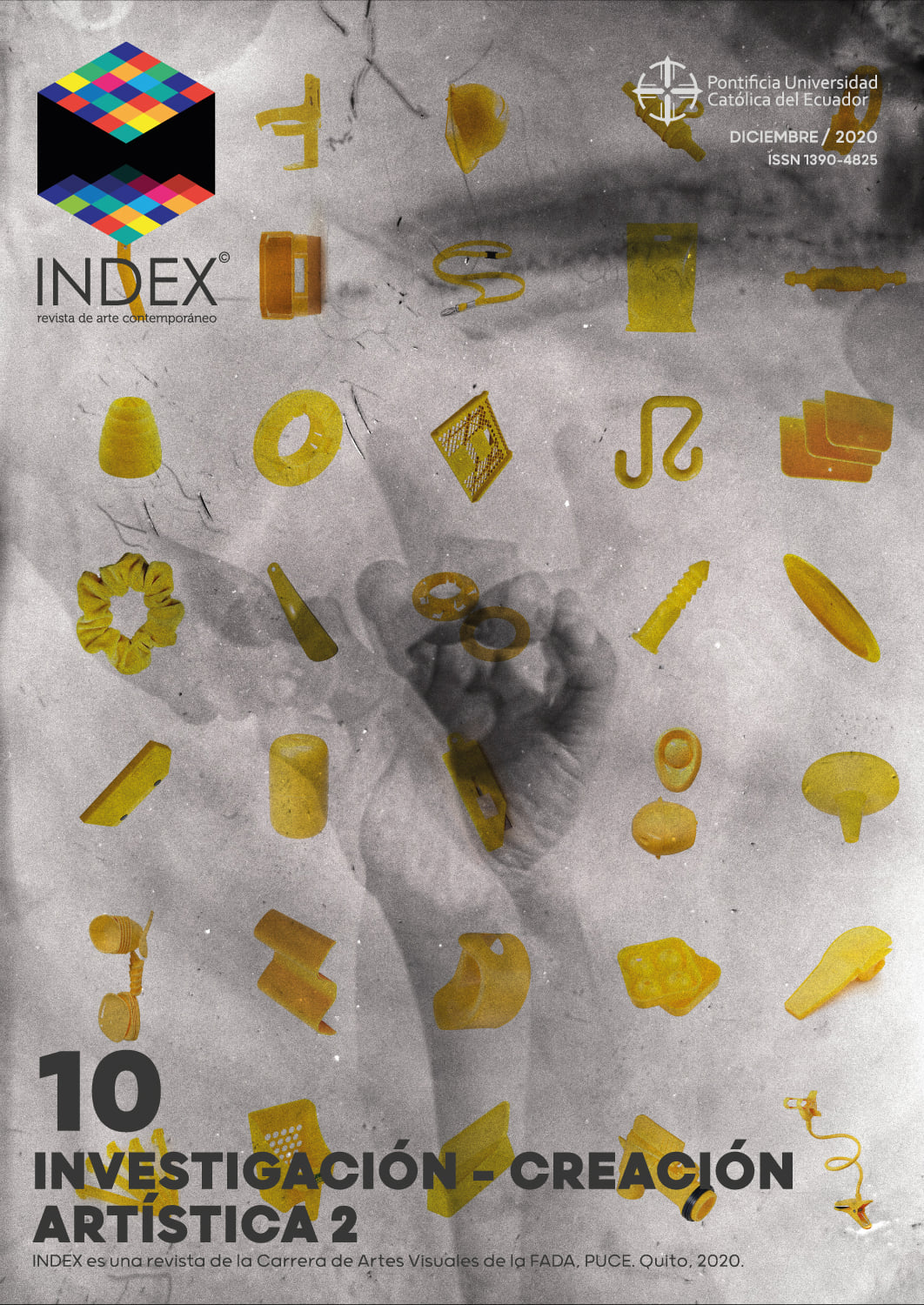Experience as a form of knowledge Methodological proposal for artistic creation from dialogue and performance
Main Article Content
Abstract
Through direct testimonies, this text highlights the value of experience in production of arising knowledges, through research-creation processes in performance art. The stories relate to involved art linked to marginality, precariousness, and homelessness. The questioned performer uses the body artistically to point out sociopolitical problems in Latin American cities, through actions underlying the artist's thought. The declarations impact the conception of humanistic judgments of popular culture used in current art. To reinforce a conceptual story, an illustrator directly observes the performer, explains and strengthens his testimonies with drawings, that take advantage of an alternative language and exploits the discursive power of image.
Downloads
Article Details
Index, revista de arte contemporáneo maneja sus derechos bajo licencia Creative Commons Reconocimiento-NoComercial 4.0. En ese sentido los envíos quedan sujetos a la decisión del autor.
References
Butt, G. (2004). After Criticism: New Approaches to Art and Performance. Oxford, Blackwell Publishing.
Diéguez Caballero, I, (2007). Escenarios liminales: teatralidades, performance y política. Biblioteca de historia del teatro occidental, Siglo XX, México, Atuel.
Feixa, C. (2018). La imaginación autobiográfica. Las historias de vida como herramienta de investigación, Barcelona, Editorial Gedisa.
García Canclini, N. (1995). Consumidores y ciudadanos, conflictos multiculturales de la globalización, México, editorial Grijalvo.
Green, J. (2002). Somatic knowledge. The body as content and methodology in dance education. Journal of Dance Education, Volume 2, Issue 4 Somatics in dance education, 8, p, 114-118, https://doi.org/10.1080/15290824.2002.10387219, marzo.
Haraway, D. (1995). Ciencia, cyborgs y mujeres. La reinvención de la naturaleza. Madrid: Cátedra.
Haraway, D. (2013) Testigo modesto segundo milenio hombre hembra, feminismo y tecnología, Editorial Universitat Oberta Catalunya UOC, España.
Lehmann, Hans Thies. (2013). Teatro posdramático, Madrid, España, Traducción de: González Diana, Editorial Centro de Documentación y Estudios Avanzados de Arte Contemporáneo (Cendeac) pág. 386
Lozano, R. (2013). Prácticas artísticas de(s) generadas: escenarios y cuerpos ambulantes, Revista de investigación teatral, Vol.3, Segunda época, México, Universidad Veracruzana.
Niño Murcia, C. et al, (2010). La carrera de la modernidad. Construcción de la carrera Décima. Bogotá (1945-1960). Bogotá, Instituto Distrital de Patrimonio Cultural – IDPC, p, 41,
Taylor, D. (2012). Performance, Argentina, Asuntoimpresiones.

